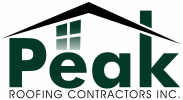If you’ve read the first part of this three-part blog, then you should have a fairly good idea about vinyl siding by now. If you still haven’t got a clue about vinyl, though, then I would encourage you to backtrack and read the first article in this series real quick. In a nutshell, though, vinyl siding was first introduced to the market a few decades ago; it quickly gained popularity as an alternative to high-maintenance painted exteriors and dent-prone aluminum siding that were the de rigueur choices back in the day.
In the previous article, we promised to discuss why vinyl remains one of the best siding options and why its low cost shouldn’t be equated with the quality it provides- you just need to know what to look for.
The Many Advantages of Getting Vinyl Siding
- It does not rot. One of the many reasons why vinyl siding works like a charm is because it offers something wood siding cannot: zero rot.
- It does not flake. Unlike paint finishes, vinyl won’t flake. Colors remain the same as they originally were when you first bought your product.
- It is unbelievably durable. While you may well doubt the claims of certain manufacturers that vinyl siding is permanent (or that it lasts forever), you can be certain that your vinyl siding will, in fact, last for a long, long time.
- There is virtually zero maintenance necessary. If there’s one thing that should convince consumers to buy a vinyl product, it’s the promise of zero maintenance. Vinyl siding does not require painting, much less regular repainting or touch-ups. It can help lower energy bills. Insulated vinyl helps conserve energy. Keep in mind, however, that real significant energy savings can only be had if you make sure to hire professionals to install your siding properly.
Vinyl Is Definitely Not a Tacky Shortcut
Despite the many advantages of vinyl listed above, a number of consumers still feel uncomfortable about using vinyl siding on their homes, thinking that vinyl is a cheap and low-quality alternative to other siding options.
The truth of the matter is, vinyl and insulated vinyl siding consistently rank high in terms of return-on-investment (ROI) for home renovation projects. According to the 2014 Cost vs. Value Report, vinyl siding replacements for midrange and upscale projects give owners a 78.2% and 78.1% ROI, respectively, which translates roughly to about $9,000 and $11,000.
Is your interest piqued yet? Read the last part of this three-part blog to find out how vinyl siding compares with other siding options.
